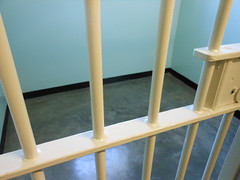According to the American Civil Liberties Union (ACLU), females are the fastest growing group of incarcerated persons in the United States. The annual growth rate for incarcerated women is now up to 7.5%, compared to 5.7% for men The majority of these women come from minority racial and ethnic backgrounds, are undereducated and come from below the federal poverty line. Most of them are serving time for nonviolent crimes.
An ACLU report states:
In the past 25 years the number of women and girls caught in the criminal justice system has skyrocketed. There are now more than 200,000 women behind bars and more than one million on probation and parole. Many have been swept up in the “war on drugs” and subject to increasingly punitive sentencing policies for non-violent offenders. Many of these women struggle with substance abuse, mental illness, and histories of physical and sexual abuse. Few get the services they need. The toll on women, girls, and their families is devastating.
“Of these women, a reported 85-90% have a history of domestic and sexual abuse. Their involvement in the justice system leaves many incarcerated women vulnerable to re-victimization.
Back at the end of 2001, 93,031 American women were incarcerated in federal and state prisons, making up 6.6% of the total incarcerated population. In 2010, more than 200,000 women were behind bars, most of them women of color. Hispanic women are incarcerated nearly twice the rate of white women, and black women are locked up at four times the rate of white women.
Many women come to prison addicted to drugs. Nearly two-thirds of females were primary guardians for their children prior to being incarcerated. Imprisoned women experienced a higher rate of childhood trauma than men. Women typically suffer more from mood and anxiety disorders.
Studies show that the way in which men and women cope while imprisoned differs in that women tend to form family structures, while male prisoners tend to isolate themselves and be more aggressive towards the other inmates. Women are more likely than men to seek psychiatric help, but only one-quarter follow through and get treatment.
The majority of imprisoned women have suffered abuse and experience post-traumatic stress disorder while behind bars. Seventy percent of guards in federal women’s correctional facilities are male, and rape, assault and groping during pat frisks are not uncommon—reinforcing inmates’ feeling of powerlessness. Women who retaliate face prolonged segregation, loss of “good time” and detrimental write-ups, which discourage future acts of resistance.
Women in prison suffer disproportionately from AIDS/HIV, infectious diseases, reproductive issues and diseases that are common to minorities and poor people, including diabetes, heart disease, hypertension and malnutrition. The U.S. prison system does not well accommodate to women’s healthcare needs.
One major effect of prison is the assault on relationships between parents and their children. Fully 2.4 million American children have a parent behind bars today and 7 million, or 1 in 10 children, have a parent under criminal justice supervision—in jail, prison, on probation or on parole.
Silja J.A. Talvi, author of Women Behind Bars, says:
During my visit to the segregated housing unit of the world’s largest women’s prison, in Chowchilla, CA, I was soon surrounded by the screams of these prisoners—moans and wails echoing off the concrete walls. It was disturbing to see women in what is a barbaric insane asylum, a place so invisible to the public and tax money.
“Nearly every one of the 100 women I interviewed had a serious history of trauma, emotional abuse, sexual abuse or domestic violence. Many had been raped. More than a third of the women entering the prison system were homeless, while 70% had moderate or severe mental illness.
“Since ex-convicts have to check that criminal record box on employment forms, and since they are not given public housing, these people will fall into an even lower class and will commit more crimes, sometimes more serious crimes. We are guaranteeing a more unstable society.
Related articles
Wikipedia entry on Incarceration of Women
Solinger, Rickie (2010). Interrupted Life:Experiences of Incarcerated Women in the United States. Berkely, CA.: University of California.



















